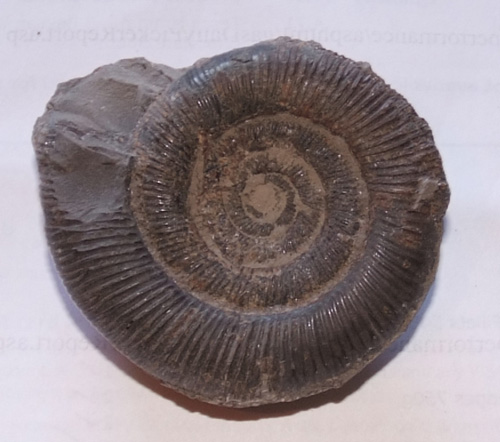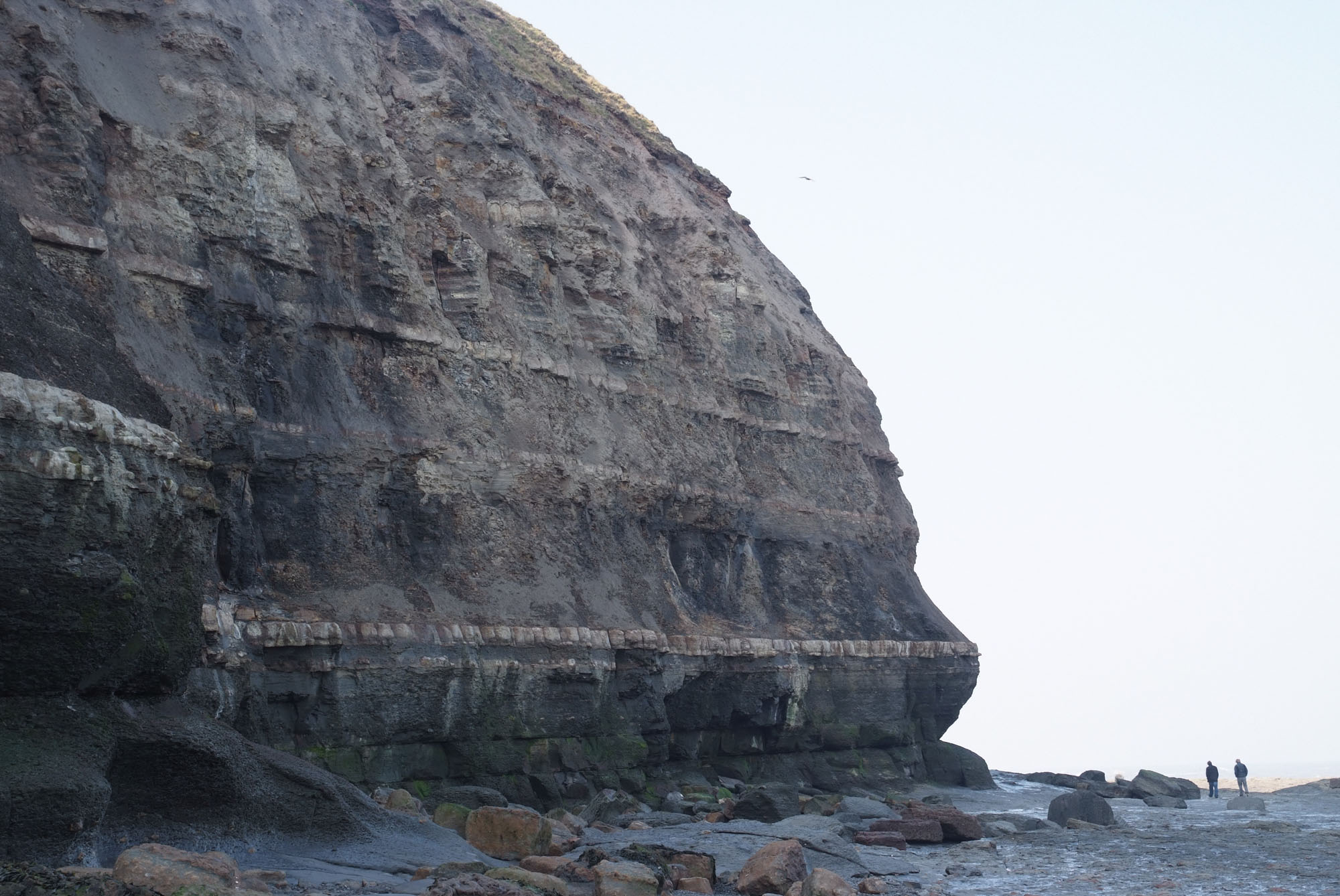Ammonites are quite common at Staithes and they are also easy to prepare. In addition, you do not need to walk far to find them. They can be found in nodules along the foreshore or within ledges ready to be picked out. It is a popular location.
DIRECTIONS
♦ Visitors to Staithes are not allowed to park in the village. This means that you have to park at the top of the hill outside Staithes in a large car park. Parking is restricted and marked for residents only.
♦ From here, it is a hard steep walk down to the bottom of the valley in which the village of Staithes is located and, from here, it is not very far along the beach to the spot where ammonites can be found.
♦ You need to be on the east side of the town and ensure when you get to the shore that you head east.
♦ Ref: 54.55992°N, 0.78462°W
PROFILE INFO
FIND FREQUENCY: ♦♦♦♦♦ – Staithes yields excellent ammonite specimens. These can easily be found along the foreshore.
CHILDREN: ♦♦♦ – This location is suitable for children, although care should be taken, as the foreshore can be slippery at times.
ACCESS: ♦♦♦ – You have to park outside Staithes at the top of the hill and walk down through the village, because parking is not allowed unless you are a resident. The car park is large and has a tourist information centre and toilets. Once at the bottom of the valley, it is not far to walk.
TYPE: – Most fossils at Staithes can be found on the foreshore, within nodules, especially after storms or scouring conditions. These can also be found in ledges at the base of the cliff.
FOSSIL HUNTING
You need to walk past the harbour walls round the first headland. Almost immediately, look for concretions that yield bivalves and scaphopods. Also notice the fossil ripple marks.
About 250m east from here, you will come to Penny Nab. This sticks out as the next headland and beyond it is a small bay. Penny Nab is the area where ammonites are regularly collected. At the base of the cliff under a sloping ledge, this headland has a layer full of siderite mudstone nodules. These can contain ammonites and, indeed, these can be collected along the foreshore, as well as dug out of this layer within nodules. They are a yellow colour and easy to distinguish. You can also find ammonites in greyish nodules further past Penny Nab.
Further east, you will come to Jet Wyke and Brackenberry Wyke. This is an area where you can find bivalves, oysters and trace fossils, such as burrows and scratch marks made by crustacean claws. Search the foreshore and base of the cliff along your route, but also be sure to check under rocks and in the shingle areas, as often fossils get trapped here.
You will need to walk to Penny Nab, which is not very far from the harbour. On the way, you can find bivalves (Protocardia truncatum, Oxytoma cygnipes and Gryphaea depressa), along with the scaphopod, Dentalium giganteum, within concretions.
At Penny Nab, the famous ammonite nodules can be found containing Amaltheus stokesi.

GEOLOGY
To the west of Staithes, the Redcar Mudstone Formation of the Lower Lias can be seen in the cliff face at beach level, due to faulting. The Staithes Sandstone Formation of the Middle Lias is visible above, followed by the Cleveland Ironstone Formation. The Whitby Mudstone Formation at the next level of strata includes Alum Shale and Jet Stone.
The Staithes Sandstone Formation consists of shallow marine sandstones and siltstones.
In general, the Cleveland Ironstone sequence here is varied sedimentologically and is very fossiliferous.
To the east of Staithes Harbour, you can see the higher part of the Staithes Formation in the lower part of the cliff and the higher beds of the Cleveland Ironstone Formation, where ironstone bands can also clearly be seen. The Whitby Mudstone Formation appears in the cliffs eastwards from Penny Nab. The rocks are from the Jurassic epoch and Middle Liassic age (Pliensbachian Stage) of about between 190.8 Ma and 182.7 million years in age.


SAFETY
Common sense when collecting at all locations should be used and knowledge of tide times is essential. It is very easy to get cut off at Staithes, as the sea always reaches the base of the cliff. Ensure you return before the tide turns.
EQUIPMENT
Most of the fossils can be found in foreshore nodules or in ledges.
ACCESS RIGHTS
This site is a site of special scientific interest (SSSI). This means you can visit the site, but hammering the bedrock is not permitted. For full information about the reasons for the status of the site and restrictions, download the PDF from Natural England.download the PDF from Natural England.
It is important to follow our ‘Code of Conduct’ when collecting fossils or visiting any site. Please also read our ‘Terms and Conditions‘
LINKS
♦ Buy Fossils, Crystals, Tools
♦ Location Discussions
♦ Deposits Magazine
♦ Join Fossil Hunts
♦ UK Fossils Network



































